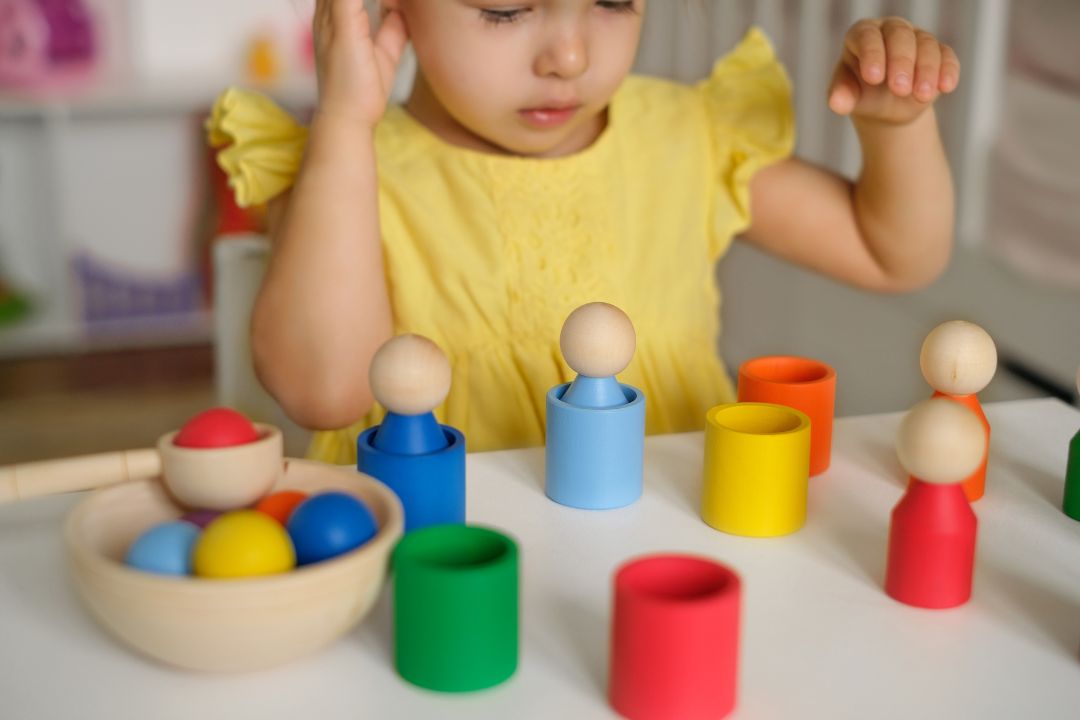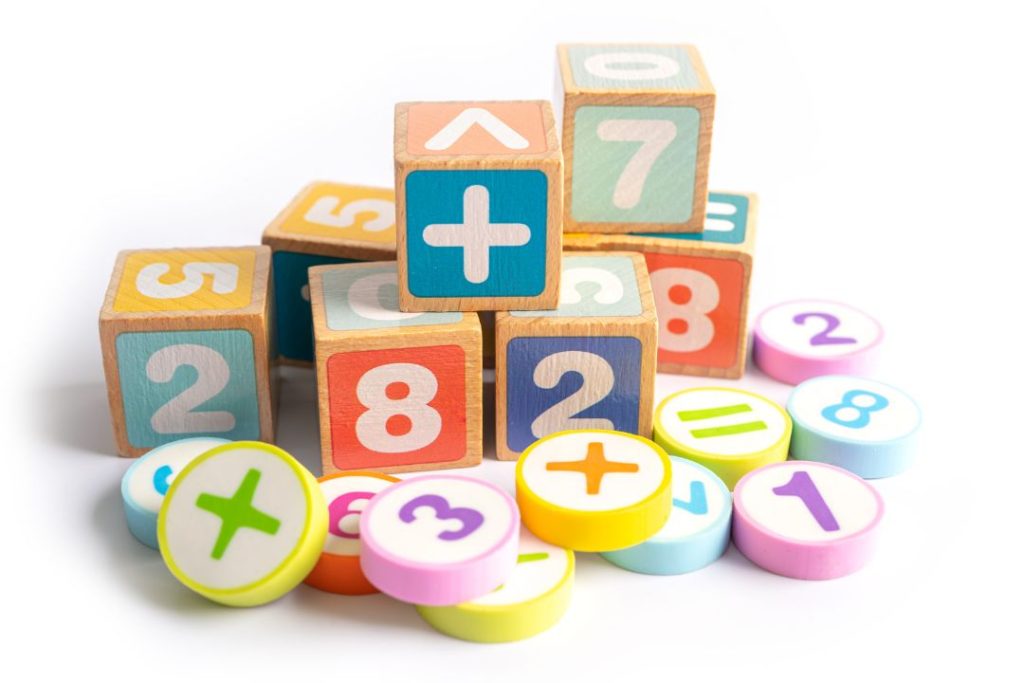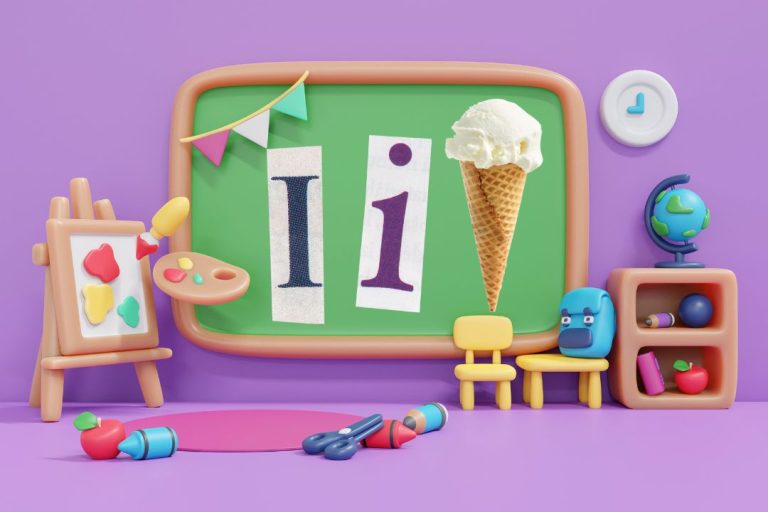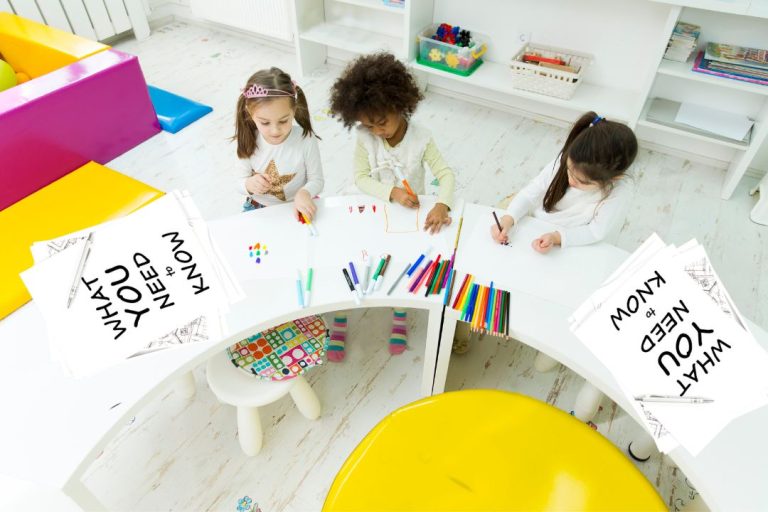How to Teach Numbers to Preschoolers: Fun and Interactive Methods

To teach numbers to preschoolers, use hands-on activities and visual aids like counting toys or flashcards. Introducing numbers to preschoolers is an essential step in their early education.
By teaching numbers at an early age, children develop a strong foundation for future math skills. However, it is important to use effective teaching methods that align with their learning style. We will explore some hands-on activities and visual aids that can help preschoolers grasp the concept of numbers.
By implementing these strategies, you can make learning numbers a fun and engaging experience for young children, setting them up for success in math and beyond. So, let’s dive into the world of numbers and discover effective ways to teach them to preschoolers.
Engaging Preschoolers In Number Fundamentals
Teaching numbers to preschoolers requires a hands-on and engaging approach to make learning fun and effective. By introducing number fundamentals in a stimulating way, you can lay a strong foundation for your child’s numeracy skills. In this article, we will explore the importance of early numeracy for cognitive development and how to establish foundational number skills at a young age.
Importance Of Early Numeracy For Cognitive Development
Early numeracy skills play a vital role in a child’s cognitive development. By introducing numbers at a young age, you are helping your child develop essential cognitive abilities such as problem-solving, logical thinking, and critical reasoning skills. Numeracy also enhances memory and concentration, which are crucial for academic success in the future.
Research has shown that children who are exposed to early numeracy activities tend to perform better in mathematics later on. By building a strong numerical foundation, you are giving your child a head start in their academic journey.
Establishing Foundational Number Skills At A Young Age
As a parent or educator, you can employ various strategies to engage preschoolers in learning number fundamentals. These hands-on activities not only make learning enjoyable but also help children grasp mathematical concepts more effectively.
1. Counting games
Engage your child in counting games that involve physical objects such as blocks, buttons, or toys. Encourage them to count aloud and associate the numbers with the corresponding quantity. This activity helps develop one-to-one correspondence and basic number recognition.
2. Number songs and rhymes
Introduce your child to catchy number songs and rhymes that highlight the sequence of numbers. Singing along with these tunes will help your preschooler become familiar with the numerical order and improve their memory retention.
3. Number puzzles and manipulatives
Provide your child with number puzzles or manipulatives like number blocks or magnetic numbers. These hands-on tools allow children to visualize and explore numbers, making abstract concepts more tangible.
4. Number recognition activities
Create engaging activities that focus on number recognition. Use flashcards, number charts, or even everyday objects with numbers on them. Encourage your child to identify numbers in their environment, such as on clocks, doors, and household items.
5. Sorting and classifying
Engage your preschooler in sorting and classifying activities using different objects. For example, grouping toys by color or size. This activity helps children understand basic mathematical concepts such as categorization and classification.
By implementing these strategies, you can actively involve preschoolers in number fundamentals. Through hands-on and interactive activities, your child will develop a strong numerical foundation, which will serve them well in their future mathematical endeavors.
Fun Methods For Number Teaching
When it comes to teaching numbers to preschoolers, incorporating fun methods can make the learning experience enjoyable and engaging. By integrating numbers into daily routines, using music and rhythm for counting, crafting with number themes, and encouraging role-playing and imaginative games, children can develop a strong foundation in math while having fun along the way.
Incorporating Numbers In Daily Routines
Incorporating numbers into daily routines is an effective way to expose preschoolers to numbers in a practical and meaningful way. By pointing out numbers on street signs, house numbers, and license plates during walks or car rides, children can develop number recognition skills naturally. Additionally, involving preschoolers in activities such as setting the table, counting and sorting items, and measuring ingredients during meal preparation provides hands-on experiences with numbers.
Using Music And Rhythm For Counting
Music and rhythm can be powerful tools in teaching numbers to preschoolers. Singing counting songs such as “One, Two, Buckle My Shoe” or “Five Little Ducks” not only helps children memorize numbers but also enhances their ability to sequence numbers correctly. Incorporating actions or hand-clapping patterns into counting songs adds a kinesthetic element to the learning process, making it even more engaging. By using rhythm instruments like drums or tambourines, children can create their own counting beats, reinforcing the concept of numbers in a fun and interactive way.
Crafting With Number Themes
Crafting activities that revolve around number themes can stimulate creativity and reinforce number recognition skills. For instance, creating number collages using cut-out numbers from magazines or cardstock can help children familiarize themselves with different number shapes and sizes. Another idea is to make number puzzles by cutting out numbers and dividing them into pieces. Preschoolers can then put the puzzles back together, reinforcing number order and spatial awareness. These hands-on crafts not only make learning numbers exciting but also promote fine motor skills development.
Role-playing And Imaginative Games
Role-playing and imaginative games provide opportunities for preschoolers to practice number concepts while immersing themselves in imaginative play. Setting up a pretend grocery store where children play the role of shopkeepers or customers allows them to count money, label items with price tags, and practice one-to-one correspondence. Another idea is to create a pretend restaurant where children write down orders, use number cards to match quantities, and engage in basic addition or subtraction. These games not only make learning numbers enjoyable but also develop social skills and critical thinking.
Interactive Games For Number Learning
Engage preschoolers in interactive number learning through fun and educational games that promote hands-on activities and cognitive development. Experience a creative approach to teaching numbers that keeps young learners engaged and excited about math.
Digital Applications And Educational Software
Interactive games are a great way to make learning numbers fun for preschoolers. With the advancement of technology, there are now several digital applications and educational software available that can assist in teaching numbers to young children. These applications provide a stimulating and engaging environment for kids to learn and practice their number skills. Most of these digital tools incorporate vibrant graphics, interactive activities, and exciting animations to capture the attention of young minds. Let’s explore some of the popular digital applications and educational software that can help in teaching numbers to preschoolers.
Homemade Number Boards And Card Games
Aside from digital applications, homemade number boards and card games are another interactive and hands-on way to teach preschoolers about numbers. These activities can easily be crafted at home using materials commonly found around the house. Creating a number board with colorful papers, stickers, or pictures can help children visually associate numbers with objects or images. Card games such as “Number Memory Match” or “Number Bingo” can also be played to reinforce number recognition and counting skills. Through these homemade activities, preschoolers can have fun while learning and practicing their numbers.
Outdoor Number Scavenger Hunts
Engaging preschoolers in outdoor activities not only provides fresh air and physical exercise but also opens the door to fun and interactive learning experiences. One such activity is an outdoor number scavenger hunt. This game involves assigning each child a number and asking them to find real-life objects corresponding to that number. For example, if a child is assigned the number ‘3’, they might search for three leaves, three flowers, or three rocks. This activity not only helps in number recognition but also enhances critical thinking and problem-solving skills. The excitement of searching and discovering objects in the outdoor environment adds an element of adventure to the learning experience. Outdoor number scavenger hunts can be an excellent way to combine learning and play for preschoolers.
In conclusion, interactive games are a fantastic way to engage preschoolers in number learning. Digital applications and educational software provide an interactive platform for children to explore and practice their number skills. Homemade number boards and card games allow for hands-on engagement and visual association with numbers. Outdoor number scavenger hunts offer an exciting and adventurous way to learn numbers in a real-life context. By incorporating these interactive games into the teaching techniques, parents and educators can create a fun and effective learning environment for preschoolers to develop their number skills.

Creative Art Projects For Numeracy
Teaching numbers to preschoolers can be an exciting and engaging process when incorporating creative art projects into the learning experience. By combining art and numeracy, children can develop a deeper understanding of numbers while having fun exploring different materials and techniques. Here are three fantastic art projects that will help preschoolers develop their numeracy skills in a creative and interactive way.
Making Number Collages With Various Materials
One of the most effective ways to teach numbers to preschoolers is by encouraging them to create number collages using a variety of materials. This project allows children to interact with numbers in a hands-on manner while also enhancing their fine motor skills. Here’s how you can set up the activity:
- Provide a selection of materials such as magazines, colored paper, foam sheets, and stickers.
- Ask the children to choose a number and gather materials that represent that number. For example, for the number 4, they could find four pictures of a cat or four blue stickers.
- Encourage the children to cut or tear the materials, arranging and gluing them onto a large piece of paper in the shape of the chosen number.
- Once completed, display the number of collages in the classroom for everyone to admire.
Painting By Numbers For Visual Association
Another wonderful art project that promotes numeracy skills in preschoolers is painting by numbers. This activity helps children associate numerical symbols with corresponding quantities while also honing their color recognition abilities. Follow these steps to create an engaging painting-by-numbers experience:
- Create simple images that incorporate numbers, such as a group of flowers with each flower labeled with a different number.
- Provide the children with a set of paints and encourage them to match the colors to the numbers on the image.
- Guide the children to carefully paint each section of the image according to the numbers, reinforcing their understanding of the numerical sequence.
- Once the paintings are complete, discuss the numbers depicted in each artwork, encouraging the children to count and identify the numerical symbols.
Sculpting Numbers With Playdough Or Clay
Playing with playdough or clay is not only a sensory delight for preschoolers but can also be a valuable tool for teaching numbers. By sculpting numbers with playdough or clay, children develop their tactile and fine motor skills while visualizing the shape and form of different numbers. Follow these steps to engage preschoolers in this hands-on numeracy project:
- Divide the playdough or clay into small portions and distribute them among the children.
- Ask the children to roll, pinch, and mold the playdough or clay to create different numbers.
- Encourage the children to examine the shapes and curves of each number they sculpt, discussing their observations.
- After sculpting the numbers, have the children arrange them in sequential order, reinforcing their understanding of number sequencing.
By incorporating these creative art projects into your numeracy lessons, you can make learning numbers an enjoyable and interactive experience for preschoolers. Not only will they develop their numeracy skills, but they will also enhance their cognitive abilities, fine motor skills, and visual perception. So grab some art supplies and get ready to inspire young minds with the fascinating connection between art and numbers!
Storytelling With Numbers
Teaching numbers to preschoolers can be a challenging task. However, incorporating storytelling with numbers can make the learning process engaging and enjoyable for young children. By combining the power of storytelling with the concept of numbers, you can capture the attention of preschoolers and foster their understanding of this important mathematical skill.
Themed Storybooks With Number Concepts
Introducing themed storybooks with number concepts is an effective way to teach numbers to preschoolers. These books are specially designed to incorporate numbers into engaging narratives that capture children’s imagination. Whether it’s counting animals on a farm or exploring a magical forest with numbered objects, themed storybooks serve as a visual aid and stimulate children’s interest in numbers.
Creating Personalized Number Stories
Creating personalized number stories is another wonderful way to engage preschoolers in the world of numbers. Tailoring stories based on children’s experiences, interests, and daily routines can make the learning process more relatable and memorable. By incorporating their names, favorite toys, or familiar objects into the stories, children feel a sense of connection and are more likely to retain the number of concepts being taught.
Using Puppets For Interactive Storytelling
Using puppets for interactive storytelling is a fantastic way to bring numbers to life and make learning enjoyable. Children are naturally drawn to puppets and find them fascinating. Utilizing puppets to act out number-related stories engages children in a hands-on and interactive learning experience. Whether it’s counting with puppet characters or solving simple math problems through play, this approach combines storytelling with tactile learning, making it highly effective for teaching numbers.

How To Teach Numbers To Preschoolers: Milestones Tracking
Teaching numbers to preschoolers is an exciting journey filled with countless milestones. As parents and educators, it is essential to track their progress and ensure they achieve these developmental goals. By monitoring their milestones, we can tailor our teaching methods to suit their individual needs and provide the necessary guidance to help them succeed.
Recognizing Numbers And Counting Objects
One of the first milestones on the path to numerical proficiency is recognizing numbers and counting objects. This foundational skill helps preschoolers establish a connection between the numeral symbol and its corresponding quantity. Here are some strategies you can use to foster number recognition and counting:
- Introduce visual aids, such as number flashcards or charts, to help children identify and associate numerals with concrete objects.
- Engage in counting activities using manipulatives like blocks or buttons to enhance their understanding of one-to-one correspondence.
- Encourage children to count familiar objects in their environment, such as toys or books, to reinforce their ability to apply counting skills to real-life situations.
Understanding Number Order And Value
Once preschoolers have mastered recognizing numbers and counting, the next milestone is developing an understanding of number order and value. This skill helps them comprehend the sequence of numbers and their relative magnitude. Here are some techniques to support their comprehension:
- Utilize number line exercises, where children place numerals in sequential order to reinforce their understanding of number progression.
- Engage in interactive games that involve comparing numbers, like “greater than” or “less than” activities, to help children grasp the concept of relative value.
- Encourage the use of manipulatives, such as counting bears or dice, to practice counting and comparing quantities, allowing preschoolers to develop a concrete understanding of number value.
Advancing From Rote Counting To Practical Application
As preschoolers grow more confident in their number skills, the final milestone is advancing from rote counting to practical application. This stage bridges the gap between abstract numerical concepts and their practical use in daily life. Here’s how you can facilitate this transition:
- Engage children in real-world counting activities, such as counting snacks while preparing snack time or counting steps while climbing the stairs, to demonstrate the practicality of numbers.
- Encourage problem-solving involving numbers, like simple addition or subtraction activities, to develop their critical thinking skills and apply their number knowledge in context.
- Provide opportunities for children to independently apply their number skills in everyday situations, such as counting objects while tidying up or setting the table, to foster their confidence and reinforce their understanding of number application.
Frequently Asked Questions For How To Teach Numbers To Preschoolers
How Do You Explain Numbers To Preschoolers?
Preschoolers can learn numbers through fun activities like counting objects, singing number songs, and playing number games. Use visual aids and hands-on materials to make learning more engaging. Incorporate numbers into daily routines and encourage them to identify numbers in their environment.
With repetition and practice, preschoolers can grasp the basics of numbers.
What Is The Easiest Way To Teach Numbers?
The easiest way to teach numbers is through hands-on activities and visual aids. Use objects like toys or counting beads to help children physically count and associate the numbers with quantity. Incorporate number flashcards or charts to reinforce the numerical concepts visually.
How Do You Teach Numbers In Early Childhood?
Teach numbers in early childhood through fun activities like counting objects, using number rhymes, and playing number games. Encourage hands-on learning with manipulatives, such as blocks or toys, to help children understand the concept of quantity. Integration into daily routines and real-life situations also aids in number recognition and counting skills.
What Is The Best Way To Teach Kids To Recognize Numbers?
To teach kids to recognize numbers, use interactive activities like counting games and puzzles. Incorporate number recognition into everyday tasks like counting objects or reading street signs. Provide visual aids such as number charts and flashcards. Make learning fun and rewarding by offering incentives or praise for their progress.
Conclusion
Teaching numbers to preschoolers is a crucial foundation for their future learning. By incorporating fun and interactive activities, you can make the learning process enjoyable and effective. Through the use of games, manipulatives, and real-life examples, children can grasp the concept of numbers and develop mathematical skills at an early age.
Remember to be patient, use repetition, and celebrate their progress. With these strategies, you can set your little ones on the path to mathematical success. Happy teaching!

Emily specializes in integrating arts into early childhood education. She believes in fostering creativity and imagination through music, art, and drama activities.







One Comment